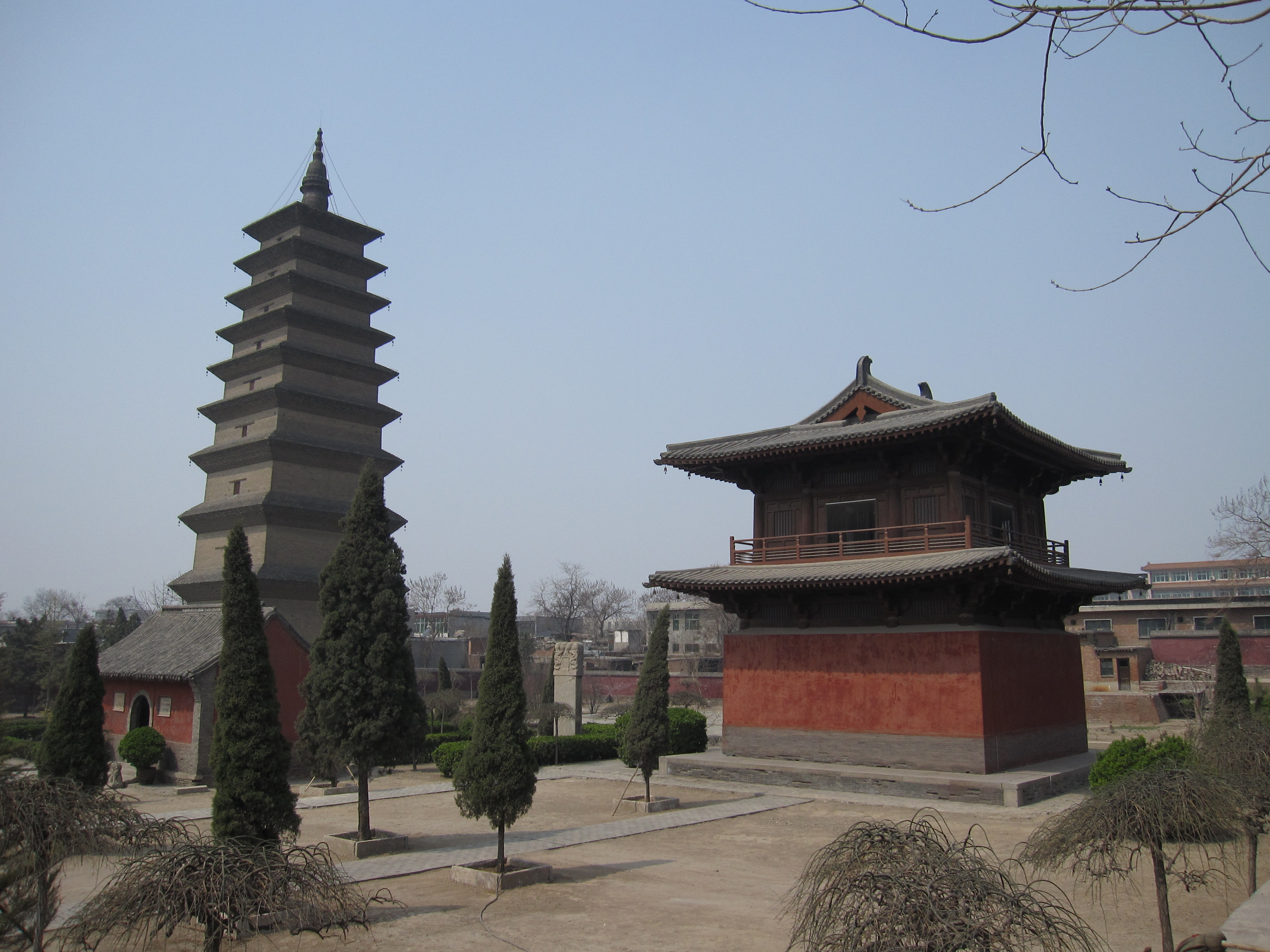Xumi Pagoda on:
[Wikipedia]
[Google]
[Amazon]

 The Xumi Pagoda () or Sumeru Pagoda, also known as Summer Pagoda is a
The Xumi Pagoda () or Sumeru Pagoda, also known as Summer Pagoda is a
The Kaiyuan Temple Pagoda at China.org.cn
{{coord, 38, 08, 22, N, 114, 33, 54, E, source:kolossus-zhwiki, display=title Buddhist temples in Hebei Pagodas in China Tang dynasty Buddhist temples 7th-century Buddhist temples Towers completed in the 7th century 630s establishments 7th-century establishments in China Major National Historical and Cultural Sites in Hebei Religious buildings and structures completed in 636

 The Xumi Pagoda () or Sumeru Pagoda, also known as Summer Pagoda is a
The Xumi Pagoda () or Sumeru Pagoda, also known as Summer Pagoda is a Chinese pagoda
A pagoda is an Asian tiered tower with multiple eaves common to Nepal, India, China, Japan, Korea, Myanmar, Vietnam, and other parts of Asia. Most pagodas were built to have a religious function, most often Buddhist but sometimes Taoist, ...
of the Buddhist
Buddhism ( , ), also known as Buddha Dharma and Dharmavinaya (), is an Indian religion or philosophical tradition based on teachings attributed to the Buddha. It originated in northern India as a -movement in the 5th century BCE, and ...
Kaiyuan Monastery west of Zhengding
Zhengding (), originally Zhending (), is a county in southwestern Hebei Province, North China, located approximately south of Beijing. It is under the administration of the prefecture-level city of Shijiazhuang, the capital of the province, and h ...
, Hebei
Hebei or , (; alternately Hopeh) is a northern province of China. Hebei is China's sixth most populous province, with over 75 million people. Shijiazhuang is the capital city. The province is 96% Han Chinese, 3% Manchu, 0.8% Hui, and 0 ...
province, China. This square-base stone and brick pagoda
A pagoda is an Asian tiered tower with multiple eaves common to Nepal, India, China, Japan, Korea, Myanmar, Vietnam, and other parts of Asia. Most pagodas were built to have a religious function, most often Buddhist but sometimes Taoist, ...
was built in the year 636 AD during the reign of Emperor Taizong of the Tang Dynasty
The Tang dynasty (, ; zh, t= ), or Tang Empire, was an imperial dynasty of China that ruled from 618 to 907 AD, with an interregnum between 690 and 705. It was preceded by the Sui dynasty and followed by the Five Dynasties and Ten Kingdom ...
(618-907). It stands at a height of 48 m (157 ft) and has been well preserved since its initial construction. The monastery
A monastery is a building or complex of buildings comprising the domestic quarters and workplaces of monastics, monks or nuns, whether living in communities or alone ( hermits). A monastery generally includes a place reserved for prayer whi ...
that once surrounded the pagoda, however, has largely been destroyed, with the exception of a few structures.
The pagoda has nine tiers of eaves and a crowning spire
A spire is a tall, slender, pointed structure on top of a roof of a building or tower, especially at the summit of church steeples. A spire may have a square, circular, or polygonal plan, with a roughly conical or pyramidal shape. Spires a ...
, along with artwork of stone carvings at the corners of the stone platform that makes up its base. The interior of the pagoda is hollow and lacks a staircase to reach the higher floors. Its style of eaves in gradual tiers resembles that of other Tang pagodas, such as the Small Wild Goose and Giant Wild Goose pagodas. Near the arched doorway leading into the pagoda is a colossal stone body of a ''bixi
Bixi, or Bi Xi (), is a figure from Chinese mythology. One of the 9 sons of the dragon, 9 sons of the Dragon King, he is depicted as a Chinese dragon, dragon with the shell of a turtle. Stone Chinese sculpture, sculptures of Bixi have been used ...
'', a Chinese mythical beast in the shape of a tortoise
Tortoises () are reptiles of the family Testudinidae of the order Testudines (Latin: ''tortoise''). Like other turtles, tortoises have a shell to protect from predation and other threats. The shell in tortoises is generally hard, and like oth ...
-like dragon.Harper, 169. The left side of the statue had been broken off and missing, until it was found in 2000, during an excavation at a nearby street.
Notes
See also
*Chinese architecture
Chinese architecture ( Chinese:中國建築) is the embodiment of an architectural style that has developed over millennia in China and it has influenced architecture throughout Eastern Asia. Since its emergence during the early ancient era, ...
*List of Buddhist temples
This is a list of Buddhist temples, monasteries, stupas, and pagodas for which there are Wikipedia articles, sorted by location.
Australia
Bangladesh
Bhutan
Brazil
* Khadro Ling Buddhist Temple, Três Coroas, Rio Grande do Su ...
References
*Harper, Damian (2005). ''Lonely Planet China: 9th Edition''. London: Lonely Planet Books. .External links
The Kaiyuan Temple Pagoda at China.org.cn
{{coord, 38, 08, 22, N, 114, 33, 54, E, source:kolossus-zhwiki, display=title Buddhist temples in Hebei Pagodas in China Tang dynasty Buddhist temples 7th-century Buddhist temples Towers completed in the 7th century 630s establishments 7th-century establishments in China Major National Historical and Cultural Sites in Hebei Religious buildings and structures completed in 636